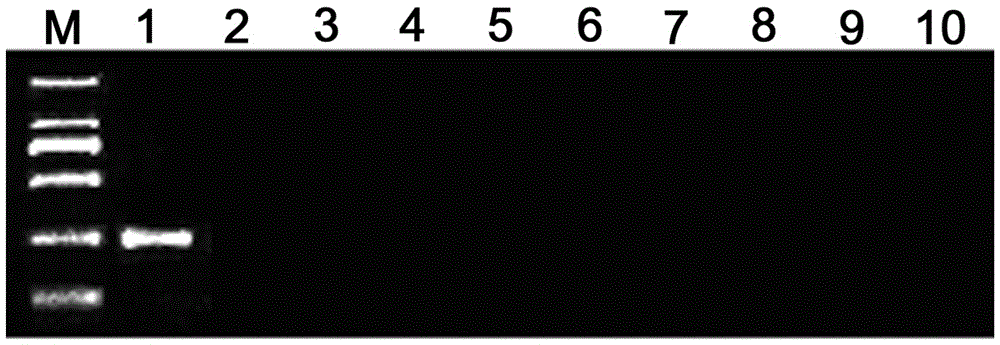Method for identifying dendrobium huoshanense by using chloroplast microsatellite primer pair
A technology of Dendrobium Huoshanense and primer pairs, which is applied to the determination/testing of microorganisms, biochemical equipment and methods, etc., and can solve the problems of unfavorable on-site detection, long time consumption, and the use of large instruments
- Summary
- Abstract
- Description
- Claims
- Application Information
AI Technical Summary
Problems solved by technology
Method used
Image
Examples
Embodiment 1
[0023] Example 1. Preparation and use method of kit for identifying Dendrobium huoshanense
[0024] 1. Design and synthesis of primer pairs for identification of Dendrobium huoshanense
[0025] The complete sequence of the chloroplast genome of Dendrobium huoshanense was obtained from GenBank. GenBank accession number is NC_028430. The SSRIT software was used to search for the polynucleotide base repetitive sequences in the complete sequence of the chloroplast genome, and then analyzed and corrected by SciRoKo 2.1 software. A total of 52 simple repetitive sequences were searched. Use primer5 and oligo6 software to control the content (AT) 23 Design specific PCR primers for detection of Dendrobium huoshanense at both ends of simple repetitive sequence sites (chloroplast microsatellite sites), as follows:
[0026] Upstream primer CPSSR1s: 5’-CGTATGCGATAGAAGAAT-3’ (sequence 1);
[0027] Downstream primer CPSSR1a: 5'-ATCTGTAGATTGGGCTCT-3' (sequence 2).
[0028] The theoretical PCR product...
Embodiment 2
[0040] Example 2. Using the kit prepared in Example 1 to identify the specificity analysis of Dendrobium huoshanense
[0041] Samples to be tested: Dendrobium huoshanense (collected in Anhui), Dendrobium guangdong (collected in Guangxi), Dendrobium Luohe (collected in Guangxi), Dendrobium Drumstick (collected in Guangxi), Dendrobium ballflower (collected in Guangxi) ), Poly Dendrobium (collected in Guangxi), Dendrobium edulis (collected in Guangxi), Dendrobium Meihua (collected in Guangxi) and Dendrobium Huanghua (collected in Guangxi). All are in line with the description of the identification characteristics of the Flora of China. Through identification, the physical objects of each sample are consistent with the name, and the quality meets the standard.
[0042] 1. Extract genomic DNA from the sample to be tested
[0043] Take about 50 mg of dried samples (of course, 100 mg of fresh samples can also be used for genomic DNA extraction), and extract total DNA by CTAB method. deta...
PUM
 Login to View More
Login to View More Abstract
Description
Claims
Application Information
 Login to View More
Login to View More - R&D
- Intellectual Property
- Life Sciences
- Materials
- Tech Scout
- Unparalleled Data Quality
- Higher Quality Content
- 60% Fewer Hallucinations
Browse by: Latest US Patents, China's latest patents, Technical Efficacy Thesaurus, Application Domain, Technology Topic, Popular Technical Reports.
© 2025 PatSnap. All rights reserved.Legal|Privacy policy|Modern Slavery Act Transparency Statement|Sitemap|About US| Contact US: help@patsnap.com


